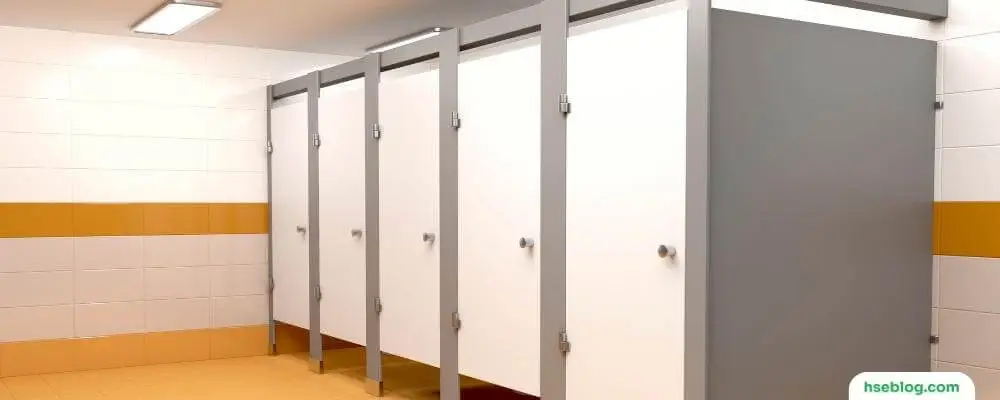Employee welfare has become an increasingly important aspect of workplace culture in recent years. Providing essential welfare facilities for on-site employees is a legal requirement in many countries and critical to ensuring workers’ health, safety, and well-being. The availability of appropriate welfare facilities can significantly impact employee productivity, satisfaction, and retention.
This blog will discuss the essential welfare facilities every workplace should have to provide employees with a safe and comfortable environment. We will also explore the benefits of investing in employee welfare and the potential consequences of neglecting it. Whether you are an employer, employee, or simply interested in workplace culture, this blog will provide valuable insights into the importance of welfare facilities in the workplace.
Importance Of Welfare Facilities For Employee
Welfare facilities play a crucial role in maintaining employee well-being and productivity. They contribute to a positive work environment by addressing employees’ basic needs, reducing stress, and promoting a sense of belonging. The following points highlight the importance of welfare facilities in the workplace:
- Employee satisfaction: Providing welfare facilities like clean restrooms, comfortable break rooms, and safe drinking water meets employees’ basic needs and creates a sense of comfort and satisfaction. Satisfied employees are more likely to stay with a company longer and be more productive.
- Health and safety: Proper welfare facilities can help prevent workplace injuries and health issues. For example, ergonomic workstations can reduce the risk of musculoskeletal problems, while a clean and well-ventilated environment can minimize the risk of airborne illnesses.
- Reducing stress and burnout: Welfare facilities like recreation rooms, gyms, or relaxing areas can help employees de-stress and recharge during breaks. This can reduce burnout rates and improve mental well-being, increasing productivity.
- Employee engagement: Welfare facilities can foster social interaction, promoting teamwork and collaboration. Social connections can improve morale, motivation, and organisational commitment, leading to higher productivity.
- Attracting and retaining talent: Offering competitive welfare facilities can make an organization more appealing to potential employees. It can also help retain top talent by demonstrating that the company values and cares about its employees’ well-being.
- Reduced absenteeism: Employees with access to proper welfare facilities are less likely to fall ill or experience work-related injuries, leading to reduced absenteeism. This can significantly impact productivity and the company’s bottom line.
- Enhanced company reputation: A company that prioritizes employee welfare facilities is often seen as a responsible and ethical employer, which can enhance its reputation and potentially attract more customers and business partners.
- Legal compliance: In many jurisdictions, employers are required by law to provide certain welfare facilities to employees. Ensuring compliance with these regulations can help avoid fines and legal issues while promoting a positive work environment.
Investing in welfare facilities is an essential aspect of employee well-being and productivity. It meets employees’ basic needs and fosters a positive work environment, leading to higher job satisfaction, better employee retention, and improved business performance.

Essential Welfare Facilities For Employees
Essential welfare facilities for on-site employees are crucial to ensure their well-being, safety, and productivity. Here is a list of some key welfare facilities that should be provided on-site:
1. Clean Drinking Water
The provision of clean drinking water is a crucial welfare facility for employees on site. Ensuring that drinking water is easily accessible to all workers is a basic necessity and essential to maintaining their overall health and well-being. Employers must guarantee that the water supply is sufficient in quantity and good quality, typically by providing mains water. If water on site is not fit for consumption, it is important to label the potable water source as “drinking water” to avoid confusion and potential health risks.
To facilitate access to clean drinking water, employers should provide water stations at strategic and convenient locations throughout the work site. These stations must be properly marked with visible signs indicating that the water is safe to drink, particularly when other water sources on site are unsuitable for consumption.
Additionally, employers should supply ample cups or other drinking vessels for employees unless the drinking water is provided in a jet or fountain format that allows for easy, direct consumption. By taking these measures, employers can ensure that their workforce remains hydrated and healthy, contributing to a more productive and safe working environment.
2. Sanitary Facilities
Sanitary facilities are critical in maintaining a hygienic and comfortable work environment for employees. Providing adequate, clean, and separate toilet and washing facilities for men and women is essential not only for the well-being of the workforce but also for ensuring compliance with health and safety regulations. This promotes an inclusive and respectful work environment, accommodating the privacy needs of all employees.
To maintain the cleanliness and functionality of these facilities, it is crucial to implement a regular cleaning and maintenance schedule. This will help to prevent the spread of germs, reduce the risk of illnesses, and contribute to a positive workplace atmosphere. A well-maintained and hygienic-sanitary environment ultimately leads to higher employee satisfaction, increased productivity, and a more successful business.
3. Changing Facilities
Changing facilities is essential to certain work environments where employees must wear specific clothing or protective gear while performing their duties. In these cases, employers should provide appropriate spaces for employees to change clothes comfortably and efficiently. It is unnecessary to offer to change facilities for employees who cycle to work or exercise during their breaks unless there is a work-related reason for them to change their attire.
Ensuring that the design accommodates the users’ privacy is crucial when providing changing facilities. This may include separate changing areas for different genders or individual changing spaces. Additionally, these facilities should be equipped with seating to provide a comfortable experience for employees as they change into their work attire. By addressing these needs, employers can contribute to a more positive and efficient work environment, allowing employees to focus on their tasks and perform at their best.

4. Rest Areas
Rest areas are an important aspect of a workplace environment, as they provide employees with a space to relax, recharge, and socialize during their breaks and meal times. Employers can contribute to their workforce’s well-being and job satisfaction by offering comfortable break areas. These spaces should be equipped with seating and tables, allowing employees to comfortably enjoy their meals and take a respite from their workstations.
In addition to promoting employee satisfaction, well-designed rest areas can foster camaraderie and teamwork among colleagues. Employers can help cultivate a positive company culture and facilitate better collaboration among team members by providing a dedicated space for employees to interact and connect. Investing in comfortable and functional rest areas can increase productivity, improve employee morale, and create a more successful work environment.
5. Separate Eating Areas
A separate eating area is essential in workplaces where employees’ food might be at risk of contamination due to work processes. For instance, it would be unsuitable for employees to consume their meals on a factory shop floor with potential contaminants. In contrast, office environments typically offer cleaner spaces, allowing employees to eat at their desks without concern for food contamination. Employers need to assess the specific conditions of their work and provide separate eating areas when necessary to ensure employee safety and well-being.
Aside from concerns about food contamination, it is also essential for employees to have the opportunity to take rest breaks undisturbed. Sometimes, sitting at a desk may be acceptable for taking breaks, as long as the employee is not interrupted. However, certain roles, such as receptionists, may not be able to enjoy undisturbed breaks at their desks due to potential interruptions from visitors or the public. In such situations, employers should provide alternative spaces where employees can take breaks and recharge without disturbance, improving job satisfaction and overall workplace morale.
6. Provision Of Lockers
The provision of lockers is essential to creating a secure and organized work environment. Providing lockers allows employees to store their personal belongings, work-related materials, or even specialized work attire in a safe and designated space. This helps maintain a clutter-free work area and contributes to the overall sense of orderliness and professionalism.
By offering lockers, employers demonstrate their commitment to ensuring the safety and privacy of their employees’ possessions. This gesture can increase the workforce’s trust and satisfaction, fostering a more positive and productive work atmosphere. In addition, lockers can help minimize theft or loss of valuable items, reducing potential conflicts and distractions that could impact employee performance and morale.

7. Provision Of Showers
Providing showers for staff can be a valuable amenity in certain work environments, but it is not always necessary for every workplace. For instance, employers are not required to offer showers solely because some employees cycle to work. The legal minimum for washing facilities in a workplace includes hand basins with hot and cold running water, allowing employees to wash their face, hands, and arms up to the elbow. It is also mandatory for employers to supply soap and towels to facilitate proper hygiene practices.
However, in cases where the work is particularly dirty, strenuous, or involves exposure to hazardous substances that could contaminate the skin, additional washing facilities such as showers or baths may be necessary. Offering showers can significantly contribute to maintaining employee health, safety, and overall well-being in these situations. Employers should assess the specific needs of their workplace and determine whether the provision of showers would be a beneficial and appropriate addition to the existing facilities.
Conclusion
Providing essential welfare facilities for on-site employees is vital to creating a safe, comfortable, and productive work environment. Employers must ensure their workforce can access clean drinking water, sanitary facilities, appropriate changing areas, rest spaces, separate eating areas when necessary, and secure storage options such as lockers. Additionally, employers should consider providing shower facilities for their staff in specific work environments where the job demands it.
Employers demonstrate their commitment to employee well-being by offering these amenities and contributing to a positive workplace atmosphere. Prioritizing employee welfare leads to increased job satisfaction and higher morale and fosters a sense of camaraderie and teamwork among colleagues. Investing in essential welfare facilities ultimately results in a more productive, efficient, and successful work environment, benefiting employees and the business.
Water Softener Size Calculator
